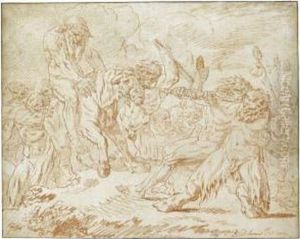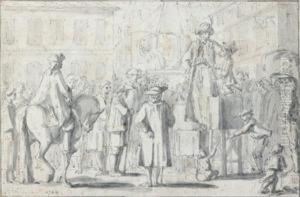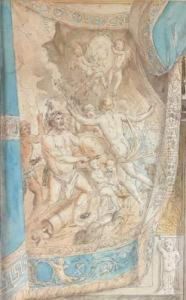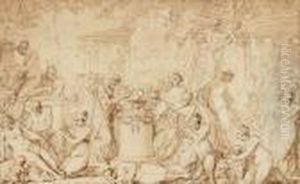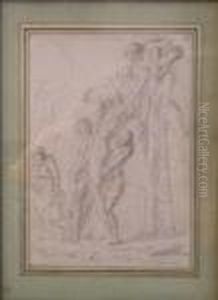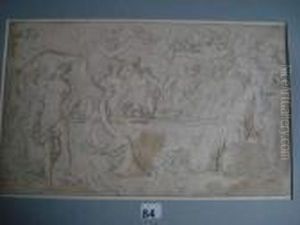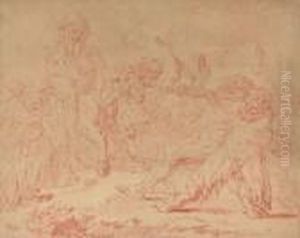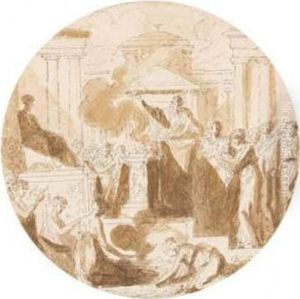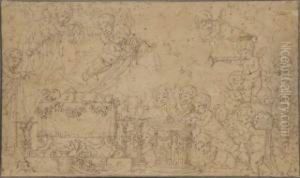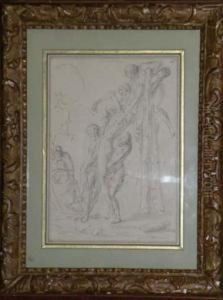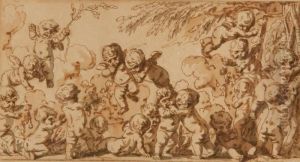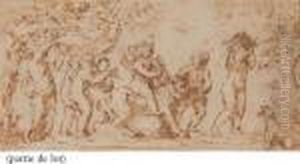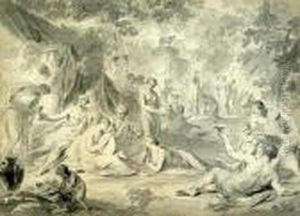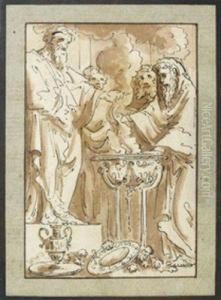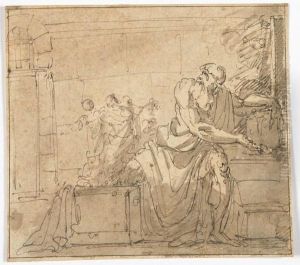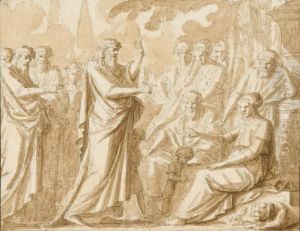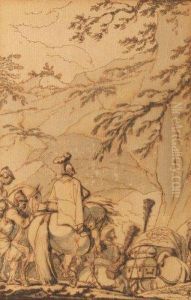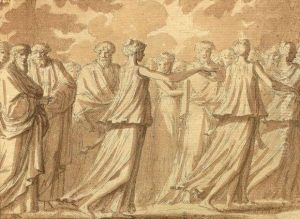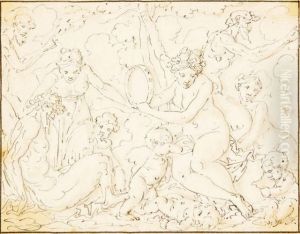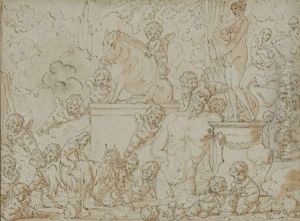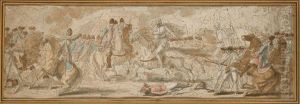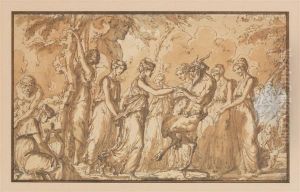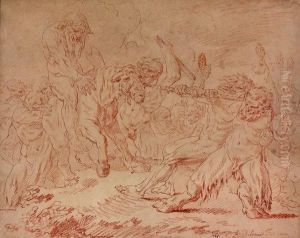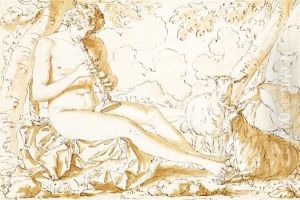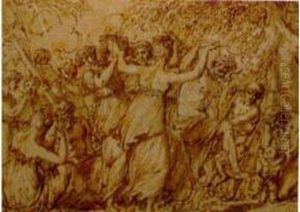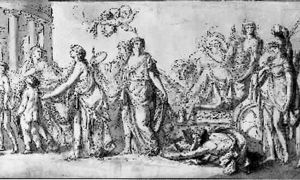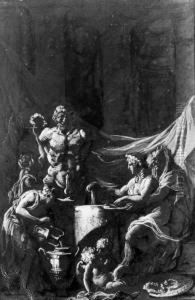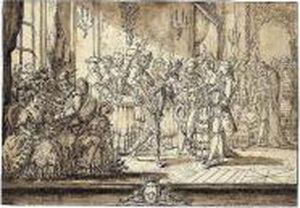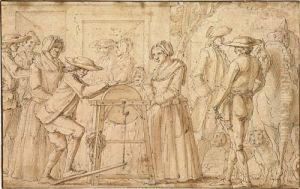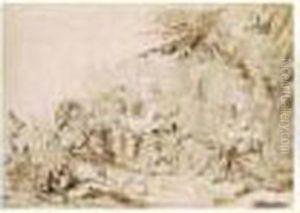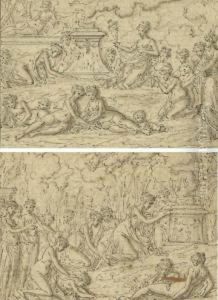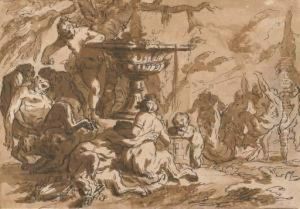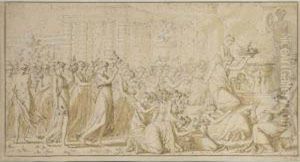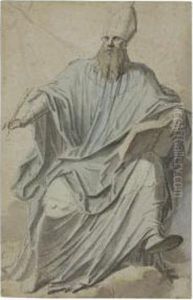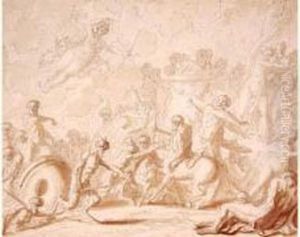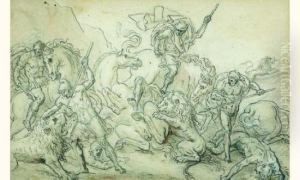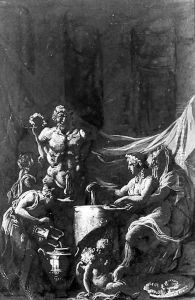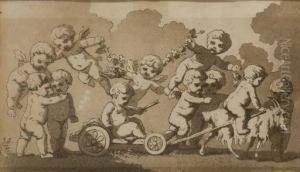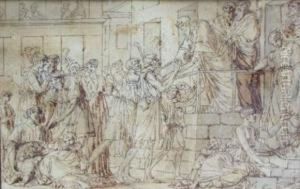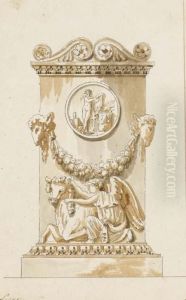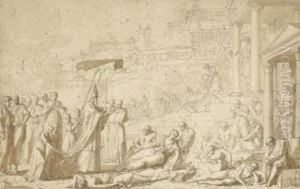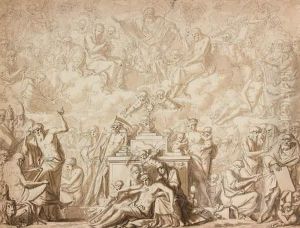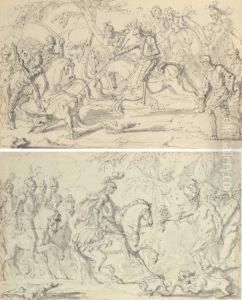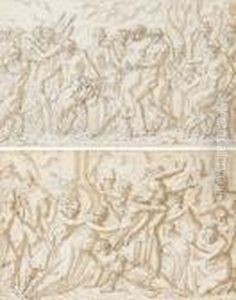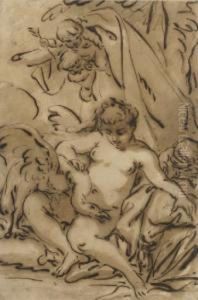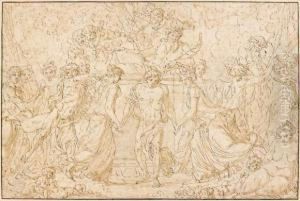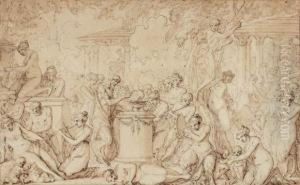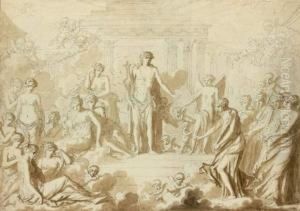Louis-Felix De Larue Paintings
Louis-Felix De Larue was a French sculptor who worked during the Rococo period, a time characterized by elaborate ornamentation, asymmetrical values, pastel color palette, and lighter, more graceful themes in art. Born in 1731, De Larue was part of an era that valued intricate designs and playful themes. His work was indicative of the transition from Rococo to the more sober and didactic Neoclassical style that became prevalent at the end of the 18th century.
De Larue's career was relatively short-lived; he died at the young age of 34 in 1765. Despite his premature death, he managed to leave a mark on the artistic landscape of France through his sculptures. He was known for his craftsmanship and the ability to convey delicate emotions and dynamic movements in his works.
Little is known about De Larue's early life or training. It is believed that he may have been a pupil of Jean-Baptiste Pigalle, a prominent French sculptor, as there are stylistic similarities in their work. De Larue's sculptures often featured mythological and allegorical subjects, which were popular during the Rococo period. He had a particular talent for depicting the human form with a sense of elegance and lightness, which made his work sought after by the patrons of his time.
Unfortunately, due to his early death and the overshadowing fame of other artists from his period, many of De Larue's works and contributions to the art world have been lost or remain lesser-known. Nevertheless, he is remembered among art historians as a talented sculptor who embodied the playful and ornate qualities of Rococo art. His surviving works continue to be studied and appreciated for their contribution to the development of French sculpture.
